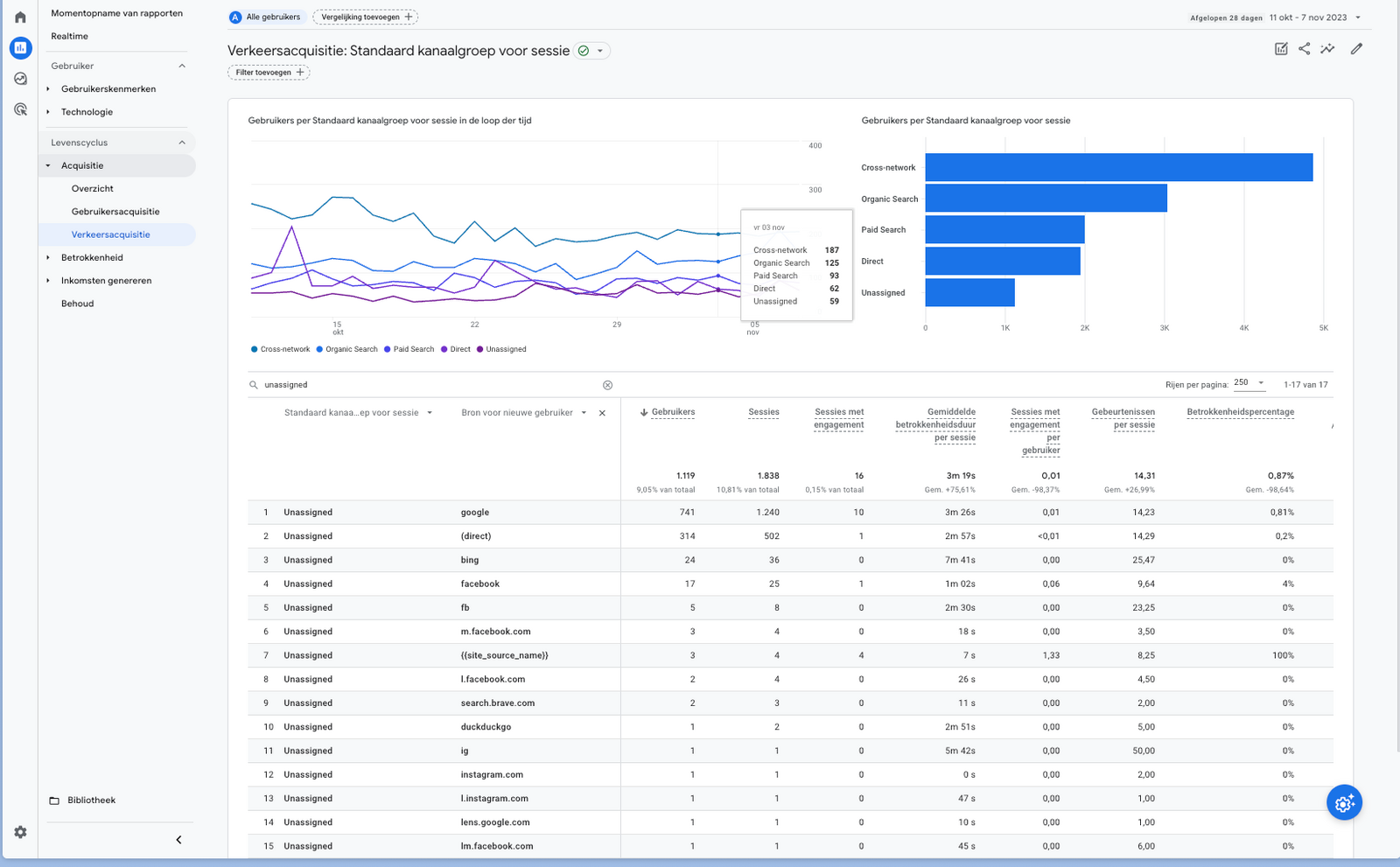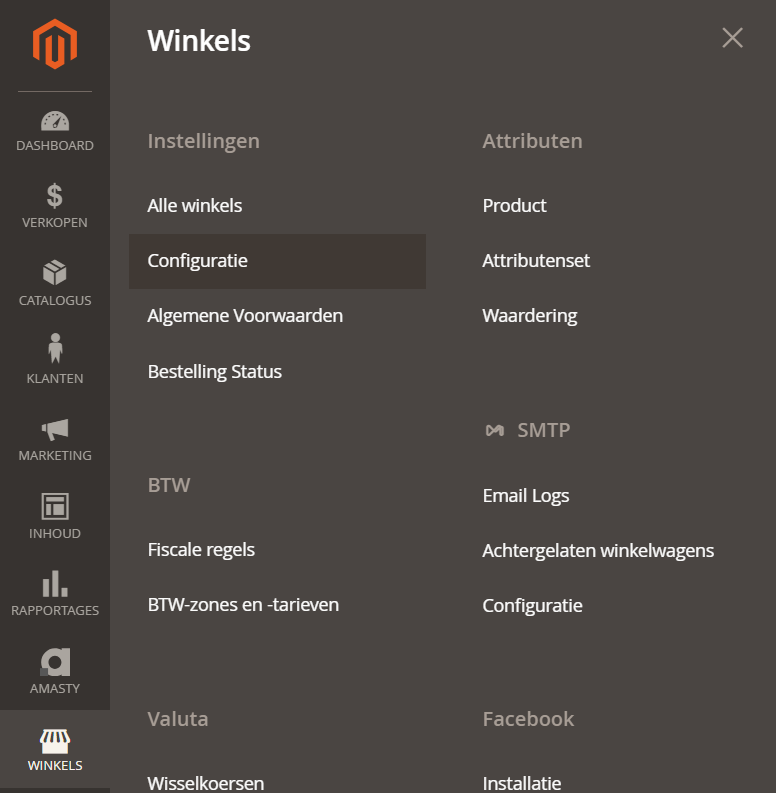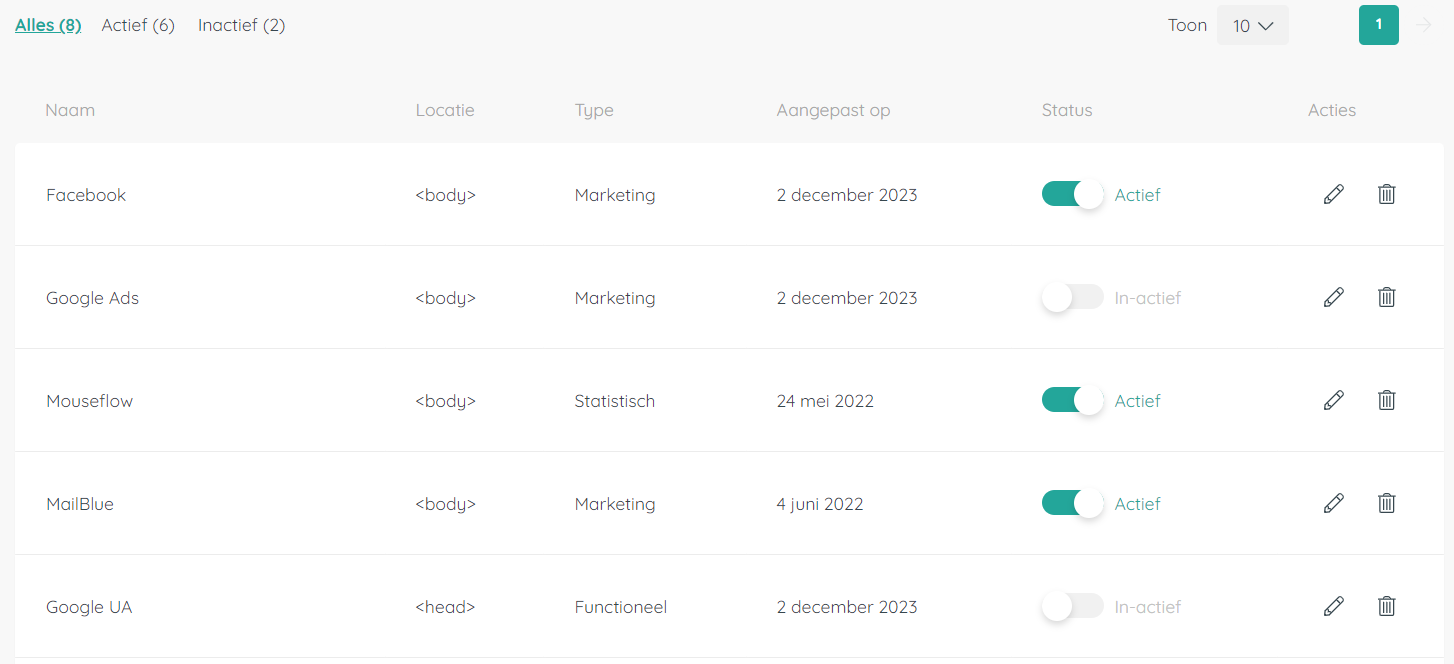Within the world of digital marketing, data is essential. In that area, Google Analytics 4 (GA4) is a valuable tool for tracking and analyzing user behavior on Websites. Every click, page view and conversion is a piece of the puzzle that allows you to make the right decisions and refine your strategy. However, there is one annoying problem that can confuse even the most experienced GA4 experts: unassigned traffic in your GA4 reports.
At Adpage we always emphasize the fact that tracking problems are frustration #1 in the world of digital marketing. That frustration is easily remedied thanks to the implementation of server-side tagging. But we find that "unassigned traffic" within Google Analytics ranks second in the frustration rankings. That is a more complex frustration that is not easily fixed. But how can you fix unassigned? There are several ways to improve it that we explain in this article.
What is "Unassigned" in Google Analytics 4?
Google Analytics 4 assigns different traffic sources into larger categories so that you as a user have a general overview of which type of channels are performing best. For example, traffic from organic Bing search and organic Google search is added to a default channel group for "Organic Search. When Google doesn't know where to assign a session or a visitor, they don't assign it anywhere and so that session or user gets 'unassigned' as a channel group/channel group.
There are a total of 18 channel groups to which traffic sources are assigned. Google uses fixed rules to assign a traffic source to a default channel groups. You can find those rules here. These are the eighteen channel groups:
- Affiliates
- Audio
- Cross-network
- Direct
- Display
- Mobile Push Notifications
- Organic Search
- Organic Shopping
- Organic Social
- Organic Video
- Paid Other
- Paid Search
- Paid Shopping
- Paid Social
- Paid Video
- Referral
- SMS
When a traffic source is not covered by standard Google rules or when Google is not sure from which channel group a user or session came to your site or app, it will be assigned "unassigned.
How do you resolve Unassigned Traffic GA4?
There are several ways to solve unassigned google analytics traffic. There is just no easy way to see which solutions are applicable to your situation, so the most useful thing to do is to see if each solution can be applied and if it is wise to apply it.
There is also a way to find out where Google Analytics goes wrong and how certain users or sessions should have actually been assigned. Make sure you read each section carefully, even if the title makes you think that this solution will not work for your situation. The solutions below are often misapplied, even by the most experienced marketers.
Solution 1: use UTM parameters.
UTM parameters are additional components that you add to the end of your external URLs. When that URL with the UTM parameters is then visited, Google Analytics can track information such as how that visitor arrived at your site. So if you don't yet use UTM parameters in your campaigns and other external links, Google can't read where a user came from. Because you and Google Analytics are blind to all the steps a visitor takes on other sites or platforms before they come to you, that person appears to Google to have come to your site from nowhere.
Here is an example of a URL with UTM parameters. When clicking through a link on LinkedIn to our blogs, you would appear on our page with this URL in your address bar in the browser:
.png)
Underlined in red in the screenshot are the UTM parameters added to the URL of this blog post for tracking purposes. You will notice that it starts with a "?" and contains the following parameters: utm_content, utm_medium and utm_source.
The addition of these UTM parameters does not change the content of the page. It does, however, allow Google Analytics to interpret the visitor's origin.
There are five standard utm parameters you can use. When you start using UTM parameters in your campaigns, we recommend always using at least utm_source, utm_medium and utm_campaign.
utm_source
This indicates the source of origin, or in other words from which site or platform the user came from. Examples include: linkedin, facebook, tiktok or youtube.
utm_medium
This indicates the medium of origin, or which marketing channels a visitor came to your site from. Examples include: social, cpc, email or organic.
utm_campaign
This indicates the campaign of origin, or in other words, thanks to which campaign the user arrived at your site. When you use different campaigns on one platform, utm_source and utm_medium will be the same for all those campaigns. So then you can use utm_campaign well to distinguish between the different campaigns from one platform. For utm_campaign, you are free to choose what to add here.
For example, for a Meta campaign, set the UTM parameters "utm_source=facebook", "utm_medium=paid_social" and "utm_campaign=leads_collect" as these rules indicate. Within Google Analytics, unassigned traffic that would actually come in through a Meta campaign will now be properly assigned.
Solution 2: Set UTM parameters correctly
In case you read the first solution and thought, "I've been setting that up correctly for a long time, this can't be the solution for me." Then chances are you've now arrived at the right solution. Too often we see marketeers and web administrators setting up their UTM parameters incorrectly.
When you use UTM parameters that are not recognized by Google, Google does not know which channel group to assign a visitor or session to. For example, if you offer a free e-book and you use the UTM parameter "utm_medium=pdf," GA4 does not know to which channel group it should be assigned. So all traffic that enters your site through that URL is displayed as "unassigned.
But besides this e-book example, there are also many business owners and marketers who add completely wrong UTM parameters to their campaigns. For example, they use "utm_medium=mail" instead of "utm_medium=email" or they use "utm_source=paid-social" instead of "utm_source=facebook". So always check that your UTM parameters match Google's standard rules.
For Meta, we recommend the following query parameters:
utm_source=facebook&utm_medium=paid&utm_source_platform={{placement}}&utm_campaign={{campaign.name}}&utm_term={{adset.name}}&utm_content={{ad.name}}
In addition, you can also add UTM parameters in the wrong place. For example, within the Meta Ads Manager, there are two different places in a campaign where you can add UTM parameters. This can be directly at the destination URL or at the tracking settings. Experience has shown that if you add UTM parameters in the tracking settings (the red arrow in the screenshot below), you will suffer from unassigned GA4 traffic. When you add the UTM parameters directly to the destination URL, this is not the case.
.png)
Solution 3: Use English terms in your UTM parameters
If your browser or your Google account is set to a language other than English, the channel groups will also be translated from English. Inside Google Analytics, you will probably see Dutch channel groups such as partners, organic traffic or referrals. It then also seems natural that you can use those Dutch terms in your UTM parameters. But so unfortunately that does not work well at the moment.
For example, when you add utm_medium=partners to a URL, traffic through this URL will not be able to be assigned. Google uses default translations in Analytics, but you cannot use this translation of the channel group Affiliates itself in your UTMs, so always use the English terms from the list of GA4 channel groups.
Solution 4: Check original sessions of unassigned traffic
The number of purchases made in a first contact moment is extremely low. Purchases are not often made in the first session. People often take longer to decide if they are going to make a purchase. So if someone comes in during the first session through your Meta campaign and comes back a few days later to actually make the purchase, GA4 may have trouble assigning this conversion.
For unassigned traffic in GA4 and for unassigned conversions, you can still see how that visitor ever got to the site. If you add an extra variable like 'Source for new user' or 'Medium for new user' within the GA4 report 'traffic acquisition' you can see that the first session of unassigned traffic can still be assigned. You can see an example of this in the screenshot below.

How can I see the above screenshot in my GA4?
Open your traffic acquisition report in GA4. The default variable of this report is 'Default channel group for session'. In any GA4 report, you can always add an additional variable via the blue plus to the right of the default variables. There you can add many different types of variables, including 'Source for new user' or 'Medium for new user'.
.png)
Then, to filter for only the unassigned default channel groups, you can use the search bar at the top left of the table.
.png)
Please note that your UTM parameters must have been in use for some time. Without UTM parameters during previous sessions, you will still not get answers here because it will still be assigned to (direct) or (not set).
Solution 5: Checking your CMP
A Consent Management Platform (CMP) plays a crucial role in ensuring privacy in online tracking. When the traffic source shows up as "unassigned" in Google Analytics, it may be due to how a CMP is set up. First, some users actively refuse cookies and tracking, so their information is not captured and everything they do is assigned as 'unassigned' or as 'not set' in GA4. Second, an improperly configured CMP can result in user information not being stored and transmitted correctly.
To address these problems, you will need to carefully check your CMP settings. Make sure that all necessary permissions are set correctly and that there are no errors in the configuration. This process will ensure that your CMP is functioning effectively, minimizing the "unassigned" label in Google Analytics. By proactively managing your CMP, you not only ensure user privacy, but also guarantee accurate data collection for valuable analytics.
Solution 6: Activate the Google Tag first
Are you using server-side tagging? Then this solution may be of use to you. Are you not using this yet? What are you waiting for? The end of third-party cookies is rapidly approaching and you want to get your tracking right, right? If you want to know more about this, sign up for our next webinar. This unassigned traffic solution is only applicable for websites using server-side tagging.
Through server-side tagging, a Google Tag (configuration tag) is fired from the web container onto each page, this configuration tag allows the web container to communicate with the server container. This Google Tag can be triggered when a page is viewed. For example, you can also trigger this tag on the initialization of a page, this way it will always be fired before all other tags. This prevents an event tag from being triggered before the Google Tag and results getting '(not set)' as a value.
.png)
Solution 7: Set up the connection between Google Ads and Analytics correctly
If you use Google Ads in addition to Google Analytics, your Google Analytics 4-property does need to be linked to your Google Ads account so that the data from Google Ads is visible in GA4. You can check and fix that connection from both Google Analytics and Google Ads. If you make the connection from Google Analytics, it should also be visible in Google Ads and vice versa. To check if your connection between Google Ads and GA4 is working, go through three steps:
Linking Google Ads with Google Analytics from Google Analytics
In your Google Analytics admin settings, you can view your product links. Here you can check under the Google Ads links to see if there is a link to your Google Ads account. If your Google Ads account is not listed, you can link it by following the instructions after clicking the 'Link' button.
.png)
Linking Google Analytics with Google Ads from within Google Ads
From Google Ads, you can also link to Google Analytics. You can see this in your Google Ads account under 'Linked Accounts' in your settings. Under your linked accounts and products, look for Google Analytics (GA4) and Firebase and then click 'Manage and link'. In the status column, the status may be "Not linked," follow the instructions to link Google Ads and Analytics.
.png)
Automatic tagging within Google Ads is not turned on
Within your Google Ads settings, auto-tagging may not be turned on. Auto-tagging ensures that conversions on Google Ads and Google Analytics are checked and linked. To check this, within Google Ads, go to your account settings and click on the 'Auto-tagging' section. If the checkbox next to 'Tag the URL that people click through to from my ad' is not checked, auto-tagging is off. Make sure it is turned on.
.png)
Solution 8: Set up a clean GA4 property
Not only from your site can events be sent to GA4. Events are also sent from other platforms such as email service providers, CRM systems or plugins on your site. These events that are not sent by you are probably not set up correctly and therefore cause a lot of unassigned traffic. GA4 cannot see which sessions those events belong to and how the users of those unknown events ended up on your site.
By creating a new GA4 property, you are essentially starting with a clean slate. This is because each GA4 property has a unique measurement ID and nothing has been sent to your new measurement ID yet. By switching to a new property, you ensure that no data is received from other sources, since the measurement ID is completely different. By using this method, you ensure a clear separation of data sources and are better able to do accurate analysis.
Solution 9: Improve your entire tracking setup
There may be other aspects of your tracking not set up properly such as your DataLayer or use of the Measurement Protocol. These are a bit more difficult to detect and resolve. But a tracking scan could reveal problems.
Request a free tracking scan for your site.
Solution 10: Disconnect your old GA4 connection
If you are already using server-side tagging, one of the reasons for your unassigned traffic may be an old GA4 connection. When you receive data through your server in GA4, you don't want to receive data from other places. A GA4 connection from your CMS, for example, will pollute your data. Below we will briefly explain per CMS where you can find the old GA4 connection to disconnect. Note that if you are not sending data from a server to GA4, you should not perform this solution.
Shopify
Within your Shopify store, go to the 'Youtube & Google' application within Apps. There you can find and unlink the Google Analytics property.
.png)
Magento
In Magento, go to Stores and then the Configuration settings.

Then, under the Sales heading, go to Google Ads. Here you can see if you still have a connection to Google Analytics. If so, you can disconnect it.

Phoenix
Within Phoenix, you can find the GA4 script, and scripts from other platforms, under Scripts in your settings. There you can set unnecessary scripts to inactive.

Lightspeed (C-Series)
Within Lightspeed, you can find the GA4 connection in your Settings. There you go to Web Statistics. There you can set up and disconnect both your Google Analytics 4 and Facebook connection.

Wordpress / WooCommerce
Within Wordpress, there are many different applications that can be used to connect to GA4. The main way is through the Google Site Kit plugin. When you open that plugin you can see your GA4 connection, among other things, and from there you can also disconnect it.
.png)
Solution 11: Reporting identity
Within GA4, you can also customize your reporting identity. If your tracking is not quite up to par, the user ID, Google Signals and device ID may not be forwarded properly. However, these are the standard methods for Google Analytics to associate users with events. If you have set your reporting identity to 'Observed' in your reporting identity, all sessions where the aforementioned methods are not present may not be assigned.
You have the option of using fewer methods to associate users with sessions. For example, you can also choose "Device-based" in the reporting identity settings. Then you only link users to sessions based on device ID. So while this solution can reduce your unassigned traffic, it does put you at risk of not linking users to the right sessions. We do not recommend this solution unless all other solutions have not solved your unassigned traffic.

Solution 12: Data processing period
It takes Google Analytics between 24 and 48 hours to process data. So if you look at your reports from today or yesterday, you may see an increase in "Unassigned" traffic. This is normal in GA4, so then it's better to grab a date range that is longer than 48 hours. Check the same period at a later time, and the number of 'Unassigned' sessions in Google Analytics 4 might be reduced.
Want to know more about GA4?
Want to learn more about the possibilities of reports within Google Analytics 4? Then check out our blog article on GA4 reports.


.png)

.png)
